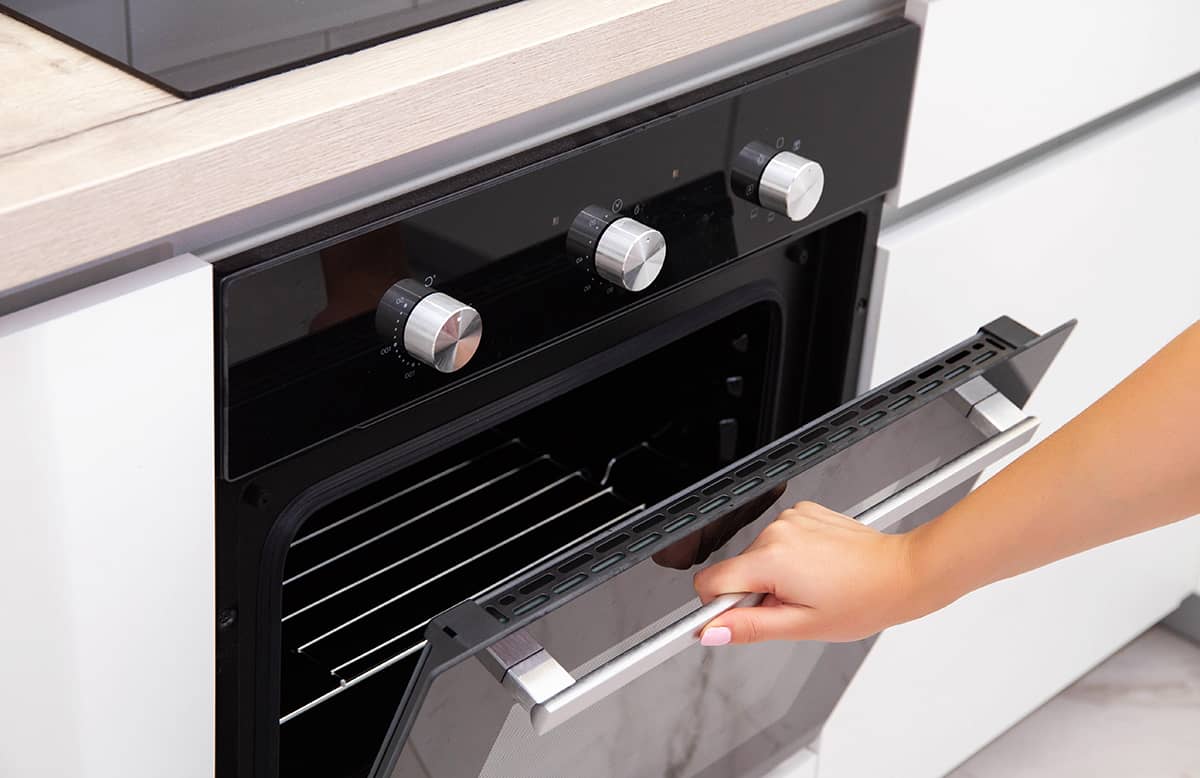For many homeowners, the kitchen oven is a vital appliance, playing a key role in the creation of daily meals and special culinary treats. However, like any other machine, it can occasionally break down due to various reasons, with one common issue being a blown fuse. Recognizing the signs of this problem and understanding how to fix it can save you time, money, and unnecessary stress.
Indications of a blown fuse in an oven could include:
- Oven not heating up
- Irregular temperature fluctuations
- The oven fails to turn on
- The oven light or timer is not functioning
In this article, we will take a closer look into the symptoms of a blown oven fuse, its causes, and how to fix it.
Importance of Promptly Addressing a Blown Fuse
A blown fuse can compromise the working of your oven and might lead to additional complications if not handled swiftly. In this section, we will delve into why addressing a blown oven fuse promptly is paramount and discuss the potential risks associated with neglecting this issue.
Safety Risks
One of the prime concerns associated with a blown fuse is the risk it poses to your safety. A fuse is designed as a safety device that prevents excessive electric current from passing through the oven’s electrical system. When a fuse blows, it indicates an overcurrent situation, which might have been caused by a power surge or a fault in the oven’s components.
If not addressed, this could potentially result in electrical fires or damage to other electrical systems in your home. Therefore, it’s crucial to rectify this issue at the earliest to safeguard your home and its occupants.
Additional Damage to the Oven
A blown fuse doesn’t just render your oven non-functional, but it could also lead to additional damage. Oftentimes, the root cause of a blown fuse is a malfunctioning component in the oven. If left unchecked, this faulty component may continue to deteriorate, leading to more extensive and costly repairs.
Moreover, repeated occurrences of blown fuses can significantly degrade the oven’s performance over time, potentially resulting in the need for a complete oven replacement sooner than expected.
Reduced Oven Efficiency
Efficiency is a key factor that determines the performance of your oven. When a fuse blows, it disrupts the normal functioning of the oven, leading to compromised performance. Your oven might take longer to heat, or it may not maintain the set temperature, resulting in undercooked or overcooked food.
This reduced efficiency can make your cooking tasks more laborious and time-consuming. Hence, promptly fixing a blown fuse will help restore your oven to its optimal performance level.
Signs and Symptoms of a Blown Oven Fuse

Recognizing the signs and symptoms of a blown oven fuse can save you from the inconveniences and potential hazards it can cause. Let’s explore these symptoms in detail.
1. Oven Not Heating
When the oven’s fuse blows, it interrupts the flow of electricity to the heating elements, causing the oven to stay cold even after it’s turned on. If you notice that your oven is not heating up at all, despite the controls appearing to work correctly, a blown fuse could be the reason.
2. Irregular Temperature Fluctuations
The oven may not maintain the temperature set on the control panel, leading to inconsistent cooking results. If your oven tends to overheat or underheat, or if the temperature fluctuates during the cooking process, it’s possible that a blown fuse is disrupting the oven’s temperature regulation mechanism.
3. Oven Doesn’t Turn On
In some cases, you might notice the oven light or the control panel not working either. This happens because the fuse, a critical component in the oven’s electrical circuit, has blown, thus breaking the electrical pathway necessary for the oven to operate. If you find that your oven is unresponsive when you attempt to turn it on, the cause might be a blown fuse.
4. Inoperable Oven Light or Timer
While these components may seem minor compared to the heating elements or the control panel, they too rely on the electrical circuit protected by the fuse. If the fuse is blown, these features might fail to work even if other parts of the oven are operational.
Causes Behind a Blown Oven Fuse
While a blown fuse is a safety measure to prevent electrical overloads, the underlying issues that lead to this situation need to be addressed. Let’s explore some common causes of a blown oven fuse.
1. Power Surges
These surges, which can be caused by lightning strikes, power outages, or issues with your home’s electrical system, result in a sudden spike in voltage. The abrupt increase in electrical current can exceed the fuse’s capacity, causing it to blow in order to protect the oven’s components from damage.
2. Age and Wear
Like all parts of an appliance, the fuse in your oven is subject to wear and tear over time. The older your oven, the more likely it is that the fuse might blow due to age-related deterioration.
3. Poor Installation
Poor installation can also lead to a blown oven fuse. If the oven is not installed correctly, or if there’s a faulty connection in the wiring, it can put undue stress on the fuse, causing it to blow.
4. Faulty Components
A blown oven fuse can also be caused by faulty components within the oven itself. If a heating element, thermostat, or another part malfunctions, it can draw more power than the fuse can handle, causing it to blow.
5. Overloaded Circuit
An overloaded circuit is another potential cause for a blown oven fuse. If there are too many appliances drawing power from the same circuit, it can lead to an overload, blowing the oven’s fuse.
Diagnosing a Blown Oven Fuse
A systematic approach can help identify whether a blown fuse is indeed the culprit. In this section, we’ll guide you through the steps to diagnose a blown oven fuse.
Safety First
Before beginning any diagnostics, ensure you disconnect the oven from the electrical source. This can be done by unplugging the oven or turning off the circuit breaker that supplies power to it. This crucial step is necessary to prevent any electrical shocks or accidents during the diagnostic process.
Visual Inspection
The first step in diagnosing a blown oven fuse is a visual inspection. Locate the fuse, which is often found behind the back panel of the oven. Look for signs of a blown fuse, such as a broken filament or charred glass. A fuse with a visible break or burn marks is a clear sign that it’s blown and needs replacement.
Multimeter Test
If the visual inspection doesn’t confirm whether the fuse is blown, you can use a multimeter for a more definitive test. Set the multimeter to the ohms setting and touch the probes to the fuse’s terminals. A good fuse will show a low resistance reading (close to zero), while a blown fuse will show infinite resistance (the multimeter will not display any reading). This test will confirm whether the fuse is the problem.
Check Other Components
If the fuse is in good condition, other components of the oven may be causing the problem. Inspect elements such as the heating element, oven sensor, and thermostat, as malfunctions in these components can cause symptoms similar to a blown fuse.
How to Fix a Blown Oven Fuse

Once you’ve diagnosed a blown oven fuse, it’s time to fix the issue. Replacing a blown fuse can restore your oven’s functionality and save you the cost of a service call. This section will guide you through the steps to fix a blown oven fuse, keeping safety and ease-of-use in mind.
Remember to follow the safety precautions as described earlier!
1. Removing the Old Fuse
The first step in fixing a blown oven fuse is removing the old one. Depending on your oven model, the fuse can typically be located behind the back panel. Remove the panel using a screwdriver, locate the fuse, and carefully remove it from its holder. It’s a good idea to take a picture of the fuse and its connections before you remove it, to help you install the new one correctly.
2. Getting the Right Replacement Fuse
To ensure proper function and safety, you must replace the blown fuse with a new one of the exact same type and rating. Refer to your oven’s user manual or the markings on the old fuse to identify the right replacement.
3. Installing the New Fuse
To install the new fuse, simply reverse the process you used to remove the old one. Fit the new fuse into the holder and reestablish the connections as they were before, referring to the picture you took if necessary. Once the new fuse is in place, reattach the back panel of the oven.
4. Testing the Oven
After replacing the fuse, it’s time to test the oven. Reconnect the oven to the power source and turn it on. Check all the functions of the oven, such as the heating elements, oven light, and timer, to ensure everything is working correctly. If the oven functions as expected, the replacement has been successful.






